All issues

Volume 47, Issue 6
Displaying 1-4 of 4 articles from this issue
- |<
- <
- 1
- >
- >|
-
Nobuyuki GDNDA1973 Volume 47 Issue 6 Pages 181-194
Published: June 20, 1973
Released on J-STAGE: September 07, 2011
JOURNAL FREE ACCESSIn order to see the effects of corticosteroids upon the intradermal pneumococcal infections, a study was done on rabbits prepared according to Goodner's principle. Subjected animals to the administration of corticosteroids were divided into 3 groups;(i) the group with a large amount -1.5 mg of Dexamethasone per day for 18 days, (ii) the group with a small amount-0.3 mg of Dexamethasone per day for 18 days and (iii) the control group without administration of steroids. The differences in the effects of the various corticosteroids were studied in the preliminary examination. There was no significant diference in the effects of the same equivalence of Predonisolone, Paramethasone and Dexamethasone upon the change of weight and the atrophy of the adrenal glands in rabbits.
RESULTS:
1) There was evidently a delay of weight increase in Group (i) compared with Group (ii). However, no significant differences could be found in the value of serum total protein, globulin and total cholesterol among the three groups.
2) Compared with Group (iii), Group (i) showed significantly alleviated localized redness, swelling and necrosis in macroscopic findings of affected lesions. But the lesions of this group were broader than those of Group (ii) and Group (iii).
3) Histologically, the grade of hyperemia and edema of the infected tissue in the early stage was much the same among the three groups. However, in Group (i) the cell infiltration was milder but the bacterial colonization was seen more widely than in other groups. Necrosis and fibrosis which mean the reparing process were slightest in Group (i), the group with large dosis of corticosteroids, followed by Group (ii), the group with small dosis of corticosteroids.
4) Bacteremia occurred in most cases of Group (i) within 24 hours after the inoculation and the number of the cultured colonies was significantly large. Also in Group (ii), occurring of bacteremia was more often than in Group (iii), the control. The death due to the infection was seen in 6 out of 10 in Group (i), 1 out of 6 in Group (ii), and none in Group (iii), the control.View full abstractDownload PDF (7509K) -
Minoru KOYAMA1973 Volume 47 Issue 6 Pages 195-203
Published: June 20, 1973
Released on J-STAGE: September 07, 2011
JOURNAL FREE ACCESST antigen of group A streptococcus has been thought as one of the common antigens to some of the different M types. However, T-typing method is practically more useful than M-typing for the identification of group A streptococci due to the stability in its antigenicity.
In this paper, the method of testing of agglutinins in rabbit and the application of this method tohuman sera were examined with the following results.
1) With the same procedure as the preparation of T monovalent serum from rabbit hyperimmuneserum, it was shown that the specific antibody to T protein existed in human serum.
2) It was confirmed that the T antibody was predominantly positive to the T type isolated from the patient about 5 weeks after the onset of pharyngitis.
3) In the sera from carriers, the positive rate and the endtiter of agglutinins to the standard T antigens were higher to the T types isolated from carriers than the other types.
4) T agglutinin of the healthy carriers was examined against the prevalent types in Japan including type 1, 4, 6, 12, and so on. Positive rate of T agglutinins to any one of the tested antigens was 68.5% in the primary school children and 44.0% in adults.
5) There observed that the T antibody pattern was different according to the groups, age, sex, and place.View full abstractDownload PDF (1093K) -
[in Japanese]1973 Volume 47 Issue 6 Pages 218-220
Published: June 20, 1973
Released on J-STAGE: September 07, 2011
JOURNAL FREE ACCESS -
1973 Volume 47 Issue 6 Pages 223-225
Published: June 20, 1973
Released on J-STAGE: September 07, 2011
JOURNAL FREE ACCESSDownload PDF (376K)
- |<
- <
- 1
- >
- >|